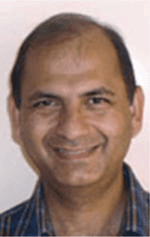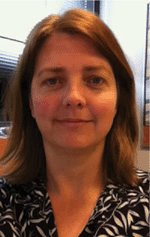The Lesueur Formation storage complex in South Western Australia: safe, secure long-term storage of CO2
Dominique Van Gent A , Sandeep Sharma B , Allison Hortle C D and Linda Stalker CA Carbon Strategy Branch of Western Australian Department of Mines and Petroleum, Level 10 Bunbury Tower, 61 Victoria Street, Bunbury, WA, Australia.
B Carbon Projects Pty Ltd, Perth, WA, Australia.
C CSIRO Energy, ARRC, 26 Dick Perry Avenue, Kensington, WA, Australia.
D Corresponding author. Email: allison.hortle@csiro.au
The APPEA Journal 60(2) 789-793 https://doi.org/10.1071/AJ19107
Accepted: 23 March 2020 Published: 15 May 2020
Abstract
Carbon capture, utilisation and storage remain critical components of a decarbonised future. The West Australian Department of Mines, Industry Regulation and Safety with research partners CSIRO, Curtin University and the University of Western Australia, have assessed the suitability of storing carbon dioxide in the deep saline aquifers of the Triassic Lesueur Formation (Southern Perth Basin) through the South West Hub Carbon Storage Project (SW Hub). The SW Hub has now concluded its acquisition of pre-competitive data and research. Extensive evaluation and multiple peer reviews by industry concluded that the site is ready for the next stage of characterisation – drilling and testing to confirm or refine the predictions for a suitable commercial-scale geological storage site, enabling acreage release for commercial exploration and appraisal leading to a storage licence. The data package includes extensive geological and dynamic modelling, providing confidence in the storage complex. Four wells have been drilled and multiple seismic data acquisition surveys (including 115 km2 3D seismic) are supported by four generations of reservoir models of increasing complexity built over the last decade of investigations. The site is unique in that there is no regional shale layer above the reservoir to provide a conventional seal for injected carbon dioxide. Results indicate that secure storage is obtained via vertical trapping across the extensive storage formation thickness; if proven, this mechanism can increase storage options around the world. This paper discusses the significance of the site, the geological setting, technical workflow, monitoring strategy and community and stakeholder management activities undertaken.
Keywords: carbon storage, data package, decarbonisation, site characterisation, South West Hub.

Dominique Van Gent was the Coordinator of Carbon Strategy with the Department of Mines and Petroleum in WA until January 2020. He was educated in Perth and has a Master Degree in Literature and Communication and a Master of Business Administration. Dominique worked in regional development assisting the resources industry on major projects, on the development of industrial areas and on infrastructure issues. He played a key role in establishing local content strategies that maximised opportunities for regional firms on the construction of the Collie power station and other projects. Dominique has been responsible for the development and management of the South West Hub Project, which has been characterising a potential onshore CO2 storage area in the Shire of Harvey in the south-west of WA. Dominique has brought many years of community engagement experience to the task of exploration and characterisation of an onshore field. He recently retired and is pursuing literary interests. |

Sandeep Sharma has been involved with CCS for over a decade. Roles have included being Program Manager of the Otway CCS Program with the Cooperative Research Centre for Greenhouse Gas Technologies (CO2CRC) on secondment from Schlumberger and being the Regional Manager, Australasia for Schlumberger Carbon Services. In Schlumberger (1981–2013) he worked across the globe and held a wide variety of senior positions in operations management, marketing and new product development. Since 2013, Mr Sharma has been working as an independent consultant in CCS. He is currently engaged with the Australian Flagship South West Hub Project as Program Advisor and Embedded Technology Manager for ANLEC R&D. He has a Bachelors in Electrical Engineering (India), a Post Graduate Diploma in Business Management (UK), has been a Visiting Fellow of the Sloan School, MIT (USA) and a Masters in Sustainability Management (Australia). He is a member of the SPE and SPWLA, has been awarded two patents and has authored and co-authored several technical papers. |

Allison Hortle began research into CO2 storage with the APCRC GeoDISC program in 1999. Allison’s research is focused on the relationship between hydrodynamic aquifers, groundwater and CO2 storage. For the CO2CRC Otway Project, Allison undertook the hydrodynamic characterisation of the target reservoir and overlying aquifers and the ongoing groundwater level monitoring of the freshwater aquifers. Allison has commenced a part-time PhD entitled ‘CO2 storage in saline hydrodynamic aquifers: interaction with and monitoring of groundwater systems’ with the University of Western Australia. This research is addressing the need to couple large-scale CO2 injection to hydrogeology, including an assessment of far-field effects and adjacent aquifer units. In conjunction with this is the need to develop cost-effective techniques for long-term measurement, monitoring and verification, including detection of leaks in groundwater resources. Allison’s project seeks to address the issues mentioned above through a combination of field data and numerical model based approaches. |

Dr Linda Stalker obtained a BSc (Hons) in Applied Geology (University of Strathclyde, Scotland) in 1990. Her PhD on petroleum geochemistry and CO2 generation, was gained at the University of Newcastle-upon-Tyne. In 1994 she joined the University of Oklahoma (USA) on a Department of Energy sponsored post-doctoral study into organosulfur compounds trapped in coals. From 1996 she worked in petroleum exploration and production at Statoil, in Norway, including 2 years on the Sleipner Field. She joined CSIRO in 2000 and has held numerous positions while maintaining research expertise in hydrocarbon exploration and production and carbon storage research. She is a member of AAPG and the Geochemical Society. Linda has been acting-CEO of the Western Australian Energy Research Alliance for 15 months. |
References
Odin Reservoir Consultants (2018). Dynamic modelling of CO2 sequestration in the Harvey area. A report by ODIN Reservoir Consultants for DMIRS, June 2018.Sharma, S., and Van Gent, D. (2018). The Australian South West Hub Project: Developing confidence in migration assisted trapping in a saline aquifer – understanding uncertainty boundaries through scenarios that stress the models. In ‘14th Greenhouse Gas Control Technologies Conference Melbourne 21–26 October 2018’. (GHGT-14). Available at https://ssrn.com/abstract=3366170 [Verified 8 April 2020].
Stalker, L., and Whittaker, S. (2017). South West Hub CCS Project: evolution of storage site characterization through targeted research and its impact on uncertainty reduction. Energy Procedia 114, 5981–5993.
| South West Hub CCS Project: evolution of storage site characterization through targeted research and its impact on uncertainty reduction.Crossref | GoogleScholarGoogle Scholar |


